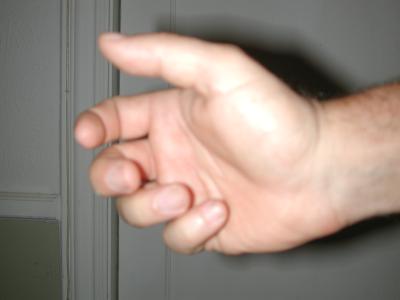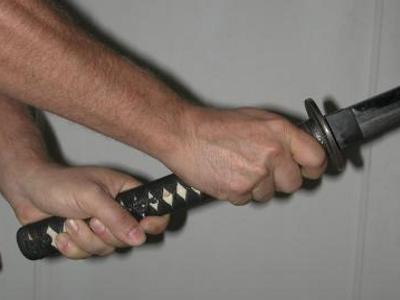Grip
/ I stopped at a gas station in the middle of nowhere on the way to the mountains last month. I checked the oil and it was pretty low so I bought a couple of quarts. I worked in a gas station when I was 14 so I know some tricks for getting a good grip, but my engine was really hot and the oil cap wouldn't budge. I went looking around in my trunk for someway to get more leverage and came up empty. I felt my manhood was being challenged. Just then a thick stocky man, about 6 inches shorter than me said, "Can I give you a hand." I'm sure I looked embarrassed but then I looked at his hands and they were clearly twice the size of mine, his fingers were as thick as cigars. "Sure, uhh...thanks" I said, and he unscrewed it. I asked where he got such huge hands and he said it was his Scottish ancestry.
I stopped at a gas station in the middle of nowhere on the way to the mountains last month. I checked the oil and it was pretty low so I bought a couple of quarts. I worked in a gas station when I was 14 so I know some tricks for getting a good grip, but my engine was really hot and the oil cap wouldn't budge. I went looking around in my trunk for someway to get more leverage and came up empty. I felt my manhood was being challenged. Just then a thick stocky man, about 6 inches shorter than me said, "Can I give you a hand." I'm sure I looked embarrassed but then I looked at his hands and they were clearly twice the size of mine, his fingers were as thick as cigars. "Sure, uhh...thanks" I said, and he unscrewed it. I asked where he got such huge hands and he said it was his Scottish ancestry.
Bone crushing power like that can not be trained.
I've been looking around the internet for a good picture of a bundle of chopsticks used for developing twisting power and grip strength. I don't see one, but I've done a fair bit of this type of training and I recommend it.
Grabbing is often considered inferior to striking or throwing because if my hands are closed around my opponent's body they aren't free for fighting. In a one-on-one match if someone grabs my wrist, I still have my hand free.

But that's generalizing, in reality there are many different types of grabbing that are effective.
If your grip is strong and well placed it can cause a lot of pain and injury or death to your opponent. For this type of grip to work your wrist, elbow and shoulder must be free to move, not rigid. Your nails must lengthen out like a cats claws with the intent to pierce the skin. The two smallest fingers are actually the strongest part of one's grip for holding, but the two larger fingers combined with the thumb are often superior for piercing.
In Taijiquan the movement "Cai" or plucking is a type of very light grabbing used only when your opponent is already leaning. Cai uses the two larger fingers with the thumb to move you partner on a 45 degree angle toward the ground. It requires no strength training, just sensitivity and clear intention (yi).

Likewise, good grappling technique does not require strength, it is all about positioning and timing. If I get you in a hold it's because I'm sensitive and you've made yourself vulnerable; it can't be planned unless one is using a surprise attack. If I've got you in a hold I can increase the pain or brake the joint with little effort. If I don't have you in the hold, strength isn't going to help me get there.
Half grips are used a lot to suddenly jerk your opponent. Done well these can cause dislocations, but they don't require that you hold on to your opponent, so a light grip works fine.
Curved fingers are used for plucking tendons. This technique is like a grab but the
 hand doesn't usually close.
hand doesn't usually close.What is important about a grip is that it connects to your torso. Twisting a bundle of chopsticks is a good technique for developing this because you are effectively twisting one arm against the other and the two arms meet in the torso where the real power should come from. You can do a simular thing with two hands on a spear.
I also practice a light dynamic grip by using a jian (double edged sword) with a slippery handle.
To develop the ability to inflict pain, you need a willing partner who lets you know what really hurts and what doesn't. You can also practice on yourself to some extent.
Making fists correctly will really develop your hands and improve your grabbing skills. If you don't practice making fists all day long, you're probably not a martial artist. It
 is painful to hold a solid, tightly packed fist for five minutes unless your technique is good. If it hurts, it is wrong (the spirits have left the body.)
is painful to hold a solid, tightly packed fist for five minutes unless your technique is good. If it hurts, it is wrong (the spirits have left the body.)Grabbing should be relaxed. When your hand closes it should feel like your whole torso is wrapping around something, all your organs and big muscles should support the movement. Developing Popeye forearms is a waste of time.
